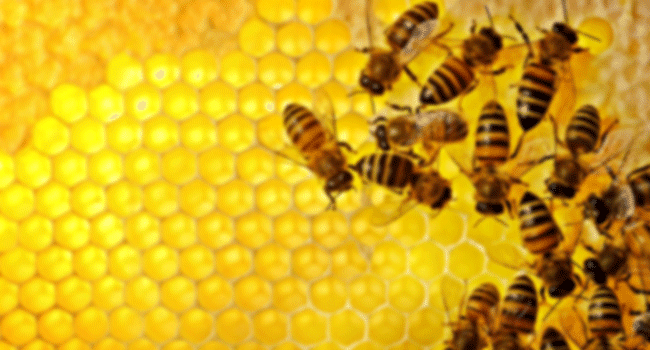Just so you know. That ‘natural’ tomato plant, actually those four ‘natural’ tomato plants that showed up in my garden last Spring did just fine. They were volunteers from seeds that overwintered from last Summer. I don’t know the parent plant variety, but it was a hybrid so the seeds would have been throwbacks to the original parents crossed to make the hybrid. Tomatoes are pretty much self-pollinated, but you can, with luck, get even more crosses on the same plant if you have an industrious bumblebee population in your garden. She will visit most of the open flowers on a plant, then move to another plant, and maybe another. She may end up sharing bits of pollen from several plants with a flower so you just never know what the seeds of the pollinated fruit will produce.
So, those ‘natural’ plants may have been true to type of one of the parents of the hybrid that produced the fruit that overwintered, or a hybrid itself from an errant cross last Summer. Nevertheless, it showed some unique characteristics that would be good to be able to continue.
For instance, on a per plant basis, all things being equal – water, fertilizer, pest pressure, light and TLC – they produced more fruit per plant than all the fancy hybrids in the same garden. Measurably more tomatoes. They blossomed about the same time as the others, but aborted fewer blossoms in the heat. An unscientific observation was that it seems there were more bumblebees visiting them than the others, but it may have been a time of day thing so I’m not sure.
So more fruit per plant, but the quality of the fruit? Ummmm, not so good. They were definitely juicer than most of the others, but they were the least sweet of the bunch. They were more like chewing water than eating a tomato. And a side by side comparison of fruit from my hybrids that were comparable size – the hybrids were way heavier, even though there seemed to be less, but not much less juice. And the skin on the naturals was “tough”. Really tough. So when you were struggling to bite into one, you really had to put pressure on the skin, and then, you know, when it finally broke, all that juice inside had to go somewhere. Yeah, messy, too.
Seed number seems similar, but those hybrids seem to have fewer, which is odd. Seed numbers tend to predict fruit size production. It takes seeds to stimulate tissue growth so more seed means meatier fruit. Not here. So, seedy, juicy, tough but definitely not sweet.
From a survival standpoint, those ‘natural’ plants and fruits were superior, no doubt about it. But would I try and propagate them, or reproduce them as a hybrid. Nope, not a chance. Live they will, and by not being very good, they won’t even get eaten, so will live to seed another day. That is a good plan for survival.
And if you think about it, not a lot different than a ‘natural’ honey bee nest. They seem to survive, but the individuals seem to be a bit, well, less than favorable to work with. They make and store honey. That’s good. They live. That’s good. They can, and often are, not the easiest to work. That’s bad. Not a lot unlike those tomatoes.
•
Speaking of survival, take a look at the monthly honey report. It’s our annual prediction of the honey crop this season, based on reports from our field reporters. We start with the number of honey producing colonies NASS counted last year and published in their annual report. Then we have our reporters give us a per cent, plus or minus, of their colonies they used this year for honey production. That tells us colony count for this year and we calculate that total for each region. Then, we get the average production per colony from each reporter and average that out for the entire region. So we have the number of colonies and yield per colony and calculate the total honey production for each region, and then the whole country. And what we’ve seen since we started this is that though the numbers aren’t quite right, the trends we’ve seen are pretty much right on.
This year we see a pretty significant drop in the number of colonies used for honey production. We don’t have a total colony count, but just those colonies used for honey production. That’s an important distinction when it comes to total colonies. But that number is down this year compared to last year. When you take a reduced amount of honey producing colonies, and look at the diminished average yield per colony you are absolutely going to have a smaller honey crop, and that’s exactly what happened.
So, we are predicting a significant drop in US produced honey this year. The drought in the Midwest, untimely rains in the east and extremely cheap imported honey prices have made honey producers here look at the economics of producing a honey crop very, very hard.
Couple that with the fact that the best way to control mites (timely application of mite controlling compounds) to keep colonies alive is the worst way to make honey (applications made during much of the season) and you have set the stage for a different way of thinking when it comes to the commercial beekeeping industry in the U.S., and, in fact, in much of the rest of the world.
The products beekeepers are profitably producing are now bees for beekeepers (whether hobby beekeepers for packages or nucs, or other commercial beekeepers to keep boxes full for pollination contracts) rather than honey in barrels. It is essentially impossible to compete with off shore honey that costs less than a dollar a pound, regardless the quality of the stuff in the barrel. I wager that the most efficient, skilled and expert commercial beekeeper in this country wouldn’t make payroll if they put all their marbles on a honey crop they had to sell to a packer. Nor would they because even if they could make honey that cheap, what do you do when it doesn’t rain?
The other income, of course, is pollination, which isn’t a product actually, but rather a service and it is a guaranteed income. As long as your bees are alive. Dead bees, certainly, don’t pollinate. So the first goal, no matter product or service, is to keep your bees alive. See above about the best way to keep bees alive.
But there’s more to this story than keeping bees alive. I was recently talking to the owner of a very, very large honey brokering business. And the gist of that conversation was about why was honey so cheap in the U.S., and more expensive almost everywhere else. You could almost hear the “Geeeeez, don’t you know?” under his breath. So I said out loud that I didn’t know why, and if he did perhaps he could share his secrets. So he did.
“You Americans”, he said, “put no value on honey. For this market, honey is simply a commodity, like corn, soybeans or wheat. And commodities can be, and are, easily sourced from many places so there is always a ready supply, and they are easy to substitute in most food products. Instead of honey you can put in sugar, high fructose corn syrup, rice syrup, stevia – anything that is sweet. Honey has no more value than corn syrup to you Americans. You have no taste, and you have no respect for the healthy aspects that honey lends to your diet and to your life.”
And he went on.
“In Europe, for the EU countries, and for many others, honey is a health food. Something you can’t get anywhere else in your diet. It is respected, it has value, it is goodness, it makes your food taste better, it makes you feel good when you eat it, it makes your life better. It is held in esteem as a food, and as a life enhancer. And it is worth good money.
“For the market in your country, I put sweet stuff in a barrel, tell the buyer it is wonderful, excellent, perfect honey from careful beekeepers in some country somewhere, and they buy it. Sight unseen, untasted, unchecked, unexamined. It is only the price that is important. It is sweet. That’s it. That’s why honey is so cheap in America. It’s a commodity. It has no value other than sweet. None. You Americans are foolish. But I don’t care because you’ll buy anything.”
It took me a bit to get over that one way conversation.
But he certainly had some points to consider. Now, there are some exceptions, of course. Almost everyone reading this knows that when you go to a farm market to sell honey, you can charge a lot more than $0.78 for a pound because the customers know you, know your product, can ask questions about your product, can actually taste it to see if they like it, and somebody they knew actually told them that your honey was the best they have ever tasted. Price is not at the top of their reasoning for buying your product.
And they are pretty sure it is a local product, and that’s important because they heard somewhere that local honey helps allergies or something, and that means it has a health value. On the local level, honey is a health food, and at least some people understand that. And that word of mouth advertising you got from that customer’s friend can’t be bought. It has to be earned. And your good product, your healthy product, your local product stood up to the test.
And there’s one more thing he told me.
“The other problem you have is that there is no culture in your culture that uses honey. There is no history, no generational memories, no food requirements, no religion, nothing that adds value to a jar of honey. In the places that pay a premium price for honey there is this culture. It is a staple in the diet, it is required for good health, it is blessed, it is needed to fulfill a part of life. The only people that share those things here are from someplace else. They brought it with them. They didn’t learn it here, and it’s not taught here. Here, honey is sweet. Honey is sweet. That’s it.”
So, I thought, does all this influence what he chooses to sell to particular customers?
“Are you kidding? Of course it does. I know I could never sell the floor scrapings I can buy from Country X in the EU, but your buyers will fight over buying them because they are floor scrapings and they don’t care, and they are cheap. And I know that even if could buy the exquisite elixirs from County Y, and often I can’t because they are sold before they are made, I could sell them to the EU or the Arab world or other markets at a premium price, and sometimes better than premium price because they want quality, and not low price.
“It’s true”, he finished, “you get what you pay for.”
So. Add all this up and the honey crop this season makes sense. The business of bees truly is the business of bees and bee things. Honey, it seems, is not the reason for the season anymore.
•
Next month is our Interview issue. Our regulars have some interesting people lined up for you to meet. I enjoy this issue more than all the rest I think because I can take away something from everybody I meet on these pages, and it’s essentially free. I don’t have get on a plane to visit or travel far and wide to see them. All I have to do is sit back and relax and enjoy. I hope you enjoy our Interview issue as much as I do. And January is our Calendar issue. We are already pouring over the entries for the prestigious photo for each month. I know you will like what our readers have sent in.











